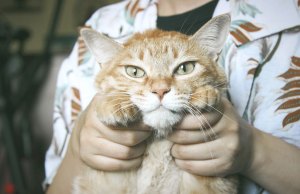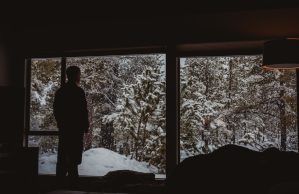
- It’s not unusual for vacationers to suffer from depression or withdrawal when they return to their daily routines.
- The immersive environment at Disney theme parks seems optimized to impart happiness, causing some guests to feel post-Disney depression after their visits.
- Disney parks use color psychology, UX design, scents, and novelty to create lasting, emotional memories.
- After your Disney experience, you can boost your mood by picking up the story where Disney left off with DIY feng shui, exposure to natural beauty, and disruption of your routine.
It’s day 2 after your arrival home from a fun, meaningful, and memorable vacation. You’re back at work and you feel down, almost disassociated from the business around you. Everyday reality feels drained of color and emotion. Unofficial diagnosis: You have the post-vacation blues. But what if you’ve just returned from Orlando? Is your office environment even more bland in comparison to Walt Disney World? Is your post-holiday depression worse after spending a week at the Most Magical Place on Earth™?
The experience economy is stocked with immersive and transformative experiences that can make your day-to-day world seem dull. Some people have withdrawal symptoms after a hedonistic weekend in Las Vegas. Others might become depressed after riding their steed away from a Renaissance fair. Your mood can even plunge after finishing an absorbing, world-building book or movie. For example, many people complained of having the “Avatar blues” after James Cameron’s movie about another planet (fortunately, they can now take comfort in the Pandora section of Animal Kingdom). And people who play virtual reality (VR) games have described “existential VR hangovers” when they take off their VR headsets. It seems as if the more immersive an experience is, the harder it is to transition seamlessly back to daily life.
But let’s return to Disney World and Disneyland (as 70% of first-time guests do!). How can these parks inspire such happiness during visits and then such dark withdrawals and depressions after departure? First, let’s take a look at how Disney theme parks are designed for maximum immersion and psychological impact. Then we can help guide you through those post-Disney mood swings.

The Psychology Behind the Happiest Place on Earth™
Disney theme parks are associated with happiness, but why? Here’s a granular breakdown of why Disney feels so magical to so many people.
Experience
Humans have a narrative bias, a predilection for storytelling. We like to see larger patterns and stories in the information we receive. So it’s immensely satisfying to walk through a themed landscape precisely oriented around this psychological bias. It starts with the Walt Disney Company’s strict language: You’re not a visitor, you’re a guest. Park employees aren’t staff, they’re cast members (CMs). Everything is scripted and staged, allowing little room for spontaneity. You’re part of a theater production that’s so grand and cohesive that it completely overtakes the real world and everyday life. You immerse yourself in the park narrative because you’re playing a role in a three-dimensional movie. You’re included in the story at a seemingly infinite number of touch points. Everything is perfectly designed for interactive absorption and stark separation from outside reality. And this dynamic happens on a few different experiential planes:
- Temporal. At Disney theme parks, real-world time becomes cinematic time. Your day is choreographed around wait times for rides, meal reservations, and the afternoon parade. Humans have an idleness aversion. They tend to be happier when they’re busy. At Disney, your mind is busy even when you’re standing in line because you’re still being distracted and entertained. In fact, MIT professor Richard Larson has studied the psychology of queuing at length, and he’s declared Disney “the absolute master” of the art of managing expectations and creating diversions in long lines.
- Cognitive. At Disney, you’re not overloaded with choices. That experience could quickly become uncomfortable due to the choice overload effect. The park’s lenticular design—a term borrowed from gaming—means that more experienced guests can have more complex interactions, but at the same time and in the same place, less experienced guests can still opt for simplicity without becoming overwhelmed. Lastly, Disney guests are surrounded by information that feels relevant to them. This means they’ll remember the experience better through the self-reference effect.
- Visual. There’s a reason Mickey Mouse ears are all over Disney parks. Due to the mere exposure effect, people are more apt to like something if they see it over and over again. People also remember pictures more than words, a phenomenon called the picture superiority effect. Disney parks are full of salient, accessible images. When people first enter the park, visual cues like purple traffic signs indicate that fantasy is about to take root. Disney Imagineers devote enormous attention to visual detail so nothing a guest sees is unintentional. For example, the color orange is used in areas of heavy traffic to keep people moving. And the light in front of Cinderella Castle is always perfect for taking selfies, no matter what time of day it is. Even the body language of cast members is artfully crafted. The CMs cannot point with a single finger because they’d risk offense in some cultures, and they must perpetually smile while “onstage.”
- UX. When Walt first created Disneyland, the field of UX (user experience) design didn’t exist. And yet Disney parks are perfectly oriented around user processes and experiences. Disney World’s Magic Kingdom contains 9 acres of “utilidor” tunnels beneath street level so guests never have to see trash cans being emptied or goods being delivered on box trucks. And guests will never need to walk farther than 30 feet to throw something away. One scholar sees ancient design principles of feng shui enacted all over Disney parks. For example, the park uses curved lines and running water to welcome the eye and create positive energy. Park maps might look cartoonish, but all the essential facilities are clearly marked. According to the author of a book entitled “Signage and Wayfinding Design”, an amusement park’s layout is primarily designed to “encourage wandering and serendipity and spending money.”
Emotion
Disney parks aim to flood their guests with positive feelings like happiness, pleasure, and optimism. Walt Disney sought to create an emotional environment that would take all the lovely sentiments evoked by his animated films and transfer them directly to a 3-D experience. And he largely succeeded. According to one scholar, Disney parks help guests achieve their five core emotional concerns: affiliation, autonomy, status, role, and appreciation. Disney World and Disneyland can do this because they have “nearly total control over the negotiation setting”, making it very difficult for negative emotions to secure a foothold. It’s not fairy-tale magic, but straight-up psychology. Let’s look at some examples of this emotional influence in action:
- Nostalgia. Books have been written about Disney’s evocation of nostalgia. The Disney theme parks use romanticized versions of small-town America (think Main Street, USA), fairy-tale Europe, fantasy, and science fiction to satisfy guests’ longings for an ideal childhood. Disney World has been called a “giant movie set of wish fulfillment.”
- Belonging. At Disney, everyone is treated as a VIP. If anyone enjoys higher status, it’s children. Cast members work hard to make guests feel as if they belong, enhancing warm feelings of affiliation. They don’t elevate specific people, but they will celebrate special occasions like birthdays. And though the parks might change somewhat through the years to appeal to younger generations, Disney strives to maintain enough of the status quo so returning visitors don’t feel disaffiliated.
- Safety. Guests at Disney parks don’t see garbage in the streets. They don’t see cops and hear sirens. The atmosphere is meant to feel safe and reassuring at all times. Cast members use code words for emergencies, as well as for unfortunate incidents like public urination or vomit. Security guards are undercover but can appear out of nowhere in the event of a crime. Airplanes aren’t even allowed to fly overhead. And in a theme park built over a swamp in Orlando, there are virtually no mosquitos.
- Appreciation. In Disney parks, cast members are trained to listen attentively and respond to any guest concerns. They’re literally not allowed to tell a guest, “I don’t know.” Complaints are greeted with smiles and helpful support. All of these minor interactions can add up to make guests feel appreciated and valued. The average guest at Disney World enjoys 60 points of contact with CMs during their visit.
- Eustress. At Disney parks, rides and rollercoasters are called attractions. The scariest ones might inspire fear and happiness at the same time, a phenomenon called eustress. The attractions can be rites of passage as well, and give guests a feeling of mastery over their environment. And at every bend in the coaster, even while guests are screaming for dear life, the park reassures them that they’re safe.
- Meaning and memory. Emotion can enhance memory-making and meaning-making, and what better way to create emotion than through the senses? Disney parks are a complex olfactory web of ambient scents produced by natural means, like flowers, and unnatural means, like Smellitzers. Years after your Disney trip, you might inhale a fresh ocean breeze and recall Pirates of the Caribbean. Disney Imagineers are also masters of color psychology, strategically placing a dominant purple as well as yellow, orange, and green accent colors around the park to produce positive emotions. And lastly, there’s Disney’s famous ambient sound system: 5,000 speakers arranged algorithmically so guests always hear heartwarming or joyful music at the same decibel.
- Autonomy. Guests won’t be happy if they feel all their actions are being controlled by the Walt Disney Company. The park gives them a sense of autonomy through digital apps and time management even though their choices are somewhat restricted. With a sense of autonomy, guests can create their own story within the bounds of the product.
- Awe. Disney provides guests with gorgeous scenery, inspiring a sense of excitement, wonder, and novelty. Ambient beauty is everywhere, from the flowering plants to the nightly fireworks to the castle skyline. And natural beauty has quantifiable (and unquantifiable) positive effects on mental health.
Tips for Leaving Any Immersive Experience or Immersive Environment
It seems as if the vast majority of people hot off a Disney vacation manage their depression by planning another trip. That’s an admirable coping strategy, but it’s also an expensive solution to the “problem” of real life. If you can’t afford to join Club 33 and make bimonthly trips to Orlando or Anaheim, then how do you handle your feelings of discontent and withdrawal? Here are some tips for beating your post-Disney blues:
- Feng shui (or Disneyize) your environment. You are the user who should most benefit from happiness-inducing UX principles in your home or office.
- Order a photo book. You paid dearly for your Disney experience. Now put those memories in a glorious Shutterfly album so you can relive them at will.
- Write down your memories while they’re still fresh. Like a photo album, a journal allows you to keep basking in the richness of your experiences.
- Don’t lose your sense of adventure. Maintain your traveler mindset and look for novelty and disruption in your usual routines.
- Contribute online park reviews for other travelers, or compile all your advice to send to friends and family when they go to Disney.
- Plan a magical vacation close to home. Invest time and energy in reaching your destination, even if it’s just an inexpensive Airbnb down the block. Meaningful experiences can make you feel rich.
- Seek out natural beauty. Disney was beautiful and awe-inspiring, but so are wild places.
- Engage your Disney senses mindfully. Wear purple, listen to your favorite Disney songs, inhale freshly-baked cookies, recreate your favorite resort recipes at home.
- Try acting more like a cast member. Your smile might be contagious, too.
- If your trip highlighted something in your life that you feel is truly lacking, then consider talking to a therapist. Sometimes post-vacation depression can happen because the trip was transformational and you return feeling like a different person, unable to fit happily into the same mold. This can be an opportunity for growth.
And lastly, remember that you were the biggest part of the Disney magic. Was it a faux utopia or a real utopia? Well, you were there, weren’t you? Immersion only works when you’re in the middle. You’re still the main character in your own story, no matter where you are.













